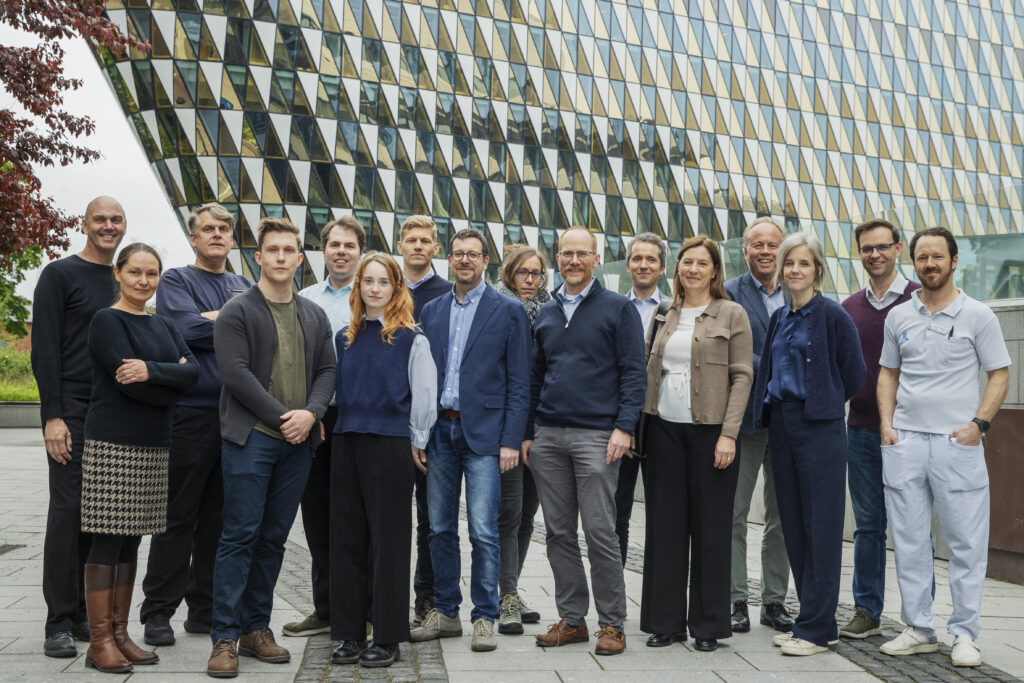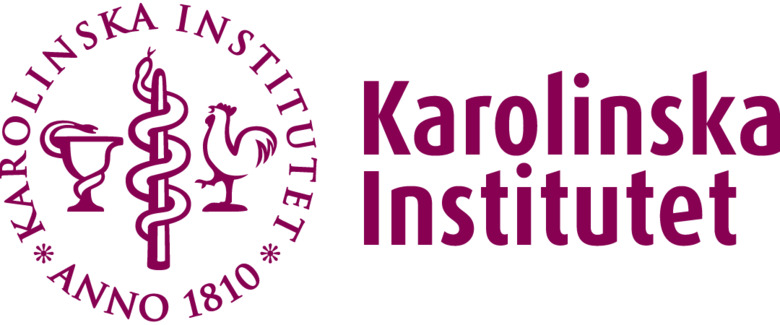The 1MICRON, an EIC Pathfinder Open project, develops ultra-high-resolution x-ray sensors for real-time cancer margin detection in surgery, aiming to revolutionize pathology and imaging with faster, more accurate diagnostics.
The 1MICRON project aims to revolutionize medical imaging by developing a monolithic x-ray sensor with 1-micron spatial resolution using integrated CMOS electronics and edge-on deep silicon geometry. This high-efficiency sensor enhances phase contrast imaging and allows for real-time, in-surgery cancer margin assessment, potentially eliminating over 100,000 delayed treatments annually in Europe. The technology also opens new markets, including developing countries. A secondary goal is to demonstrate its use in future CT systems, enabling low-power, high-flux imaging and non-invasive “3D virtual biopsies.” The expert European team behind 1MICRON is poised to drive a major shift in pathology and clinical imaging.

Team
PI´s
Anders Björklid, Prismatics Sensors AB
Mats Danielsson, KTH
Johan Hartman, Karolinska Institutet
Julia Herzen, TUM
Manuel Rolo, INFN- Instituto Nazionale di Fisica Nucleare
Lucio Pancheri, University of Trento
Project Management
Moa Yveborg Tamm, KTH
Public Relations and Communications
Johan Schuber, KTH, jschuber@kth.se, +46 705 510809
Deliverables
The project last from 1 March 2024 to 28 February 2029.

The purpose of the programme is to use technology to diagnose and treat cardiovascular diseases, including stroke, and cancer.
The programme develops the next generation of computed tomography, a special form of x-ray that creates very detailed images of the body’s organs. Spectral CT is an advanced X-ray method with high image resolution and a completely new functionality that makes diagnosis and treatment safer. Patients who participate in this research at MedTechLabs may undergo a CT scan under the supervision of a hospital engineer and clinical supervisor before continuing their treatment. The research goal is to enable safer operations, diagnostics and treatment. CT technology is continually being upgraded. The research also uses endovascular technology, which means that with the guidance of X-rays one can navigate inside the body’s vessels in order to pull out blood clots, for example. The technique also makes it possible to take samples and inject or deposit drugs locally in organs that are otherwise difficult to access.
The programme is led by Scientific Directors Mats Danielsson, professor at Medical Imaging at KTH Royal Insititute of Technology, and Staffan Holmin, professor at the Department of Clinical Neuroscience at KI and senior physicians and responsible for R&D, research and development at the functional area of neuroradiology at Karolinska University Hospital.
Participants in MedTechLab’s research are volunteer patients and healthy test subjects. The projects follow good clinical research practice, the law on ethics testing and other health and research ethics principles and are approved by authorities.
Contact information:
Mats Danielsson, KTH Royal Institute of Technology, e-mail: mats.danielsson@medtechlabs.se
Staffan Holmin, Karolinska Institutet/Karolinska University Hospital, e-mail: staffan.holmin@medtechlabs.se
Research Leader Niclas Roxhed, KTH Royal Institute of Technology
The project aims to develop extremely small drug capsules, about as thin as a hair, which can be delivered with endovascular techniques. The release of drugs from the capsule is controlled by a remote signal outside the body. This makes it possible to release medication on command, for example once a week or month without the need for a new procedure. To achieve this, we develop capsules based on micro- and nanotechnology that make it possible to construct mechanical structures on a micro-scale and which are activated in a specific way with the help of an external signal. The capsules will be evaluated with a cancer drug and tested in relevant models.
Research Leader Staffan Holmin and Jeroen Goos, Karolinska Institutet
We use immune cells, a poison peptide and bispecific antibodies to specifically target radiation to tumors. Undesirable radioactive radiation is reduced with this targeted method. Protocols for radioactive labeling of immune cells have been optimized and established. The distribution of radiolabeled immune cells (human stromal cells, rat macrophages, human peripheral mononuclear cells) in the body has been monitored in animal models using positron emission tomography (PET) imaging studies. A manuscript with initial results is currently under review. Translation of the results in preparation for clinical trials has begun. In addition, we have radioactively labeled a brain tumor-specific scorpion venom peptide. The radiolabeling was successful and we were able to show that the radiolabeled peptide could bind to glioma cells in the brains of mice. These studies potentially provide new treatment options for cancer patients.
Research Leader Staffan Holmin, Karolinska Institutet
We have continued with the development of the concept of inserting a thin instrument (so-called Extroducer) inside the vessels and have now e.g. succeeded in creating access to the brain parenchyma in pigs via veins. This enables studies on cell transplantation and potentially on sampling. We have published results of heart and kidney access as well as modified technique for access to the pancreas. We have also further developed, tested and patented a microbiopsy tool to enable minimally invasive cardiac sampling for all parts of the heart and developed and verified tissue management protocols for analysis of RNA in these small samples. Ongoing tests of the cardiac biopsy instrument for verification in human tissue are performed in collaboration with Sahlgrenska University Hospital. Development and testing of a microbiops tool for use inside Extroducer is ongoing. We have recently developed and are testing a new instrument dedicated to sampling endothelial cells in various disease states. Furthermore, we have published results of clinical studies of double energy CT scanning after thrombectomy (where blood clots are removed with thin tools via blood vessels) and during thrombolysis (dissolution of blood clots). We have also done a data analysis and published the results from the Stockholm Triage Study, which meant that patients with suspected blood clots in the large vessels of the brain were transported directly to the new Karolinska University Hospital. In addition, we have published new experimental MRI and PET-based concepts to identify endangered brain tissue in acute ischemic stroke.
Research Leader Mats Danielsson, KTH Royal Institute of Technology
The central component of the photon-counting spectral computed tomography technology is a newly developed photon-counting silicon detector. Already the version of the detector that is currently being evaluated in a computer tomograph means a great improvement compared to previously used detector types, but it’s only a first step towards the full potential of silicon detector technology. In this project, which is a collaboration with Linköping University, we develop a new detector version with micrometer resolution and the ability to not only count but also track the photons as they move in the detector. In addition to significantly higher resolution, this detector technology can provide lower noise and better sensitivity to the spectral composition of X-rays. A potential application is also the ability to take images with phase contrast in an efficient way, an imaging technique that can provide new types of information about imaged tissues.
Research Leader Mats Persson, KTH Royal Institute of Technology
In order for the new (photon-counting) computed tomography technology to reach its full potential, the newly developed hardware needs to be supplemented with improved data processing algorithms so that measured data is fully utilized and provides the best possible image quality. In this project, we develop the next generation of image reconstruction methods for photon computing computed tomography and evaluate the resulting image quality. In collaboration with the General Electric Research Center in Niskayuna, NY, USA, we have developed a method for correcting for physical effects when taking pictures that can otherwise incluce artifacts. In collaboration with the Department of Mathematics at KTH, we have also developed an image reconstruction method based on deep neural networks, so-called deep learning, which can greatly reduce the noise in the images. In a few years’ time, the combination of photo-counting computed tomography with the next generation of image reconstruction can take the image quality in computed tomography to a whole new level.
Research leader Mats Persson, KTH
Lung X-rays and computed tomography play a major role in the care of covid-19 patients. At the same time, knowledge on how X-ray images should be interpreted is still limited. The departments of Medical Technology and Medical Image Physics at KTH have in collaboration with Karolinska University Hospital developed a software that largely automates the analysis of X-ray images of covid patients, by marking the lungs and lung damage caused by covid-19. This can save huge amounts of time for physicians who analyze large amounts of patient images to find patterns that can help with treatment. MedTechLabs also develops AI tools based on deep neural networks to automatically analyze computed tomography images of covid patients and predict the patient’s future course of the disease.

